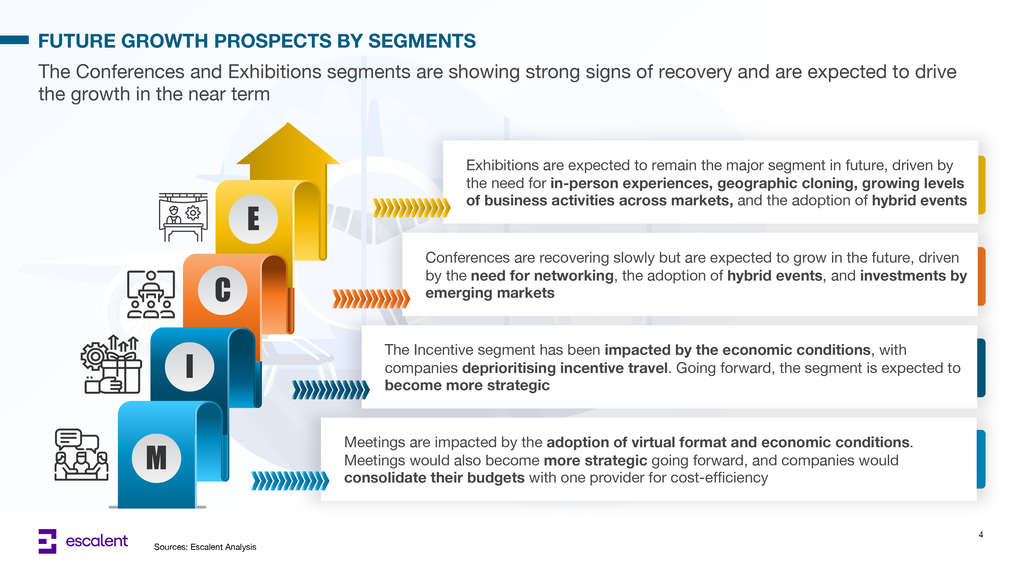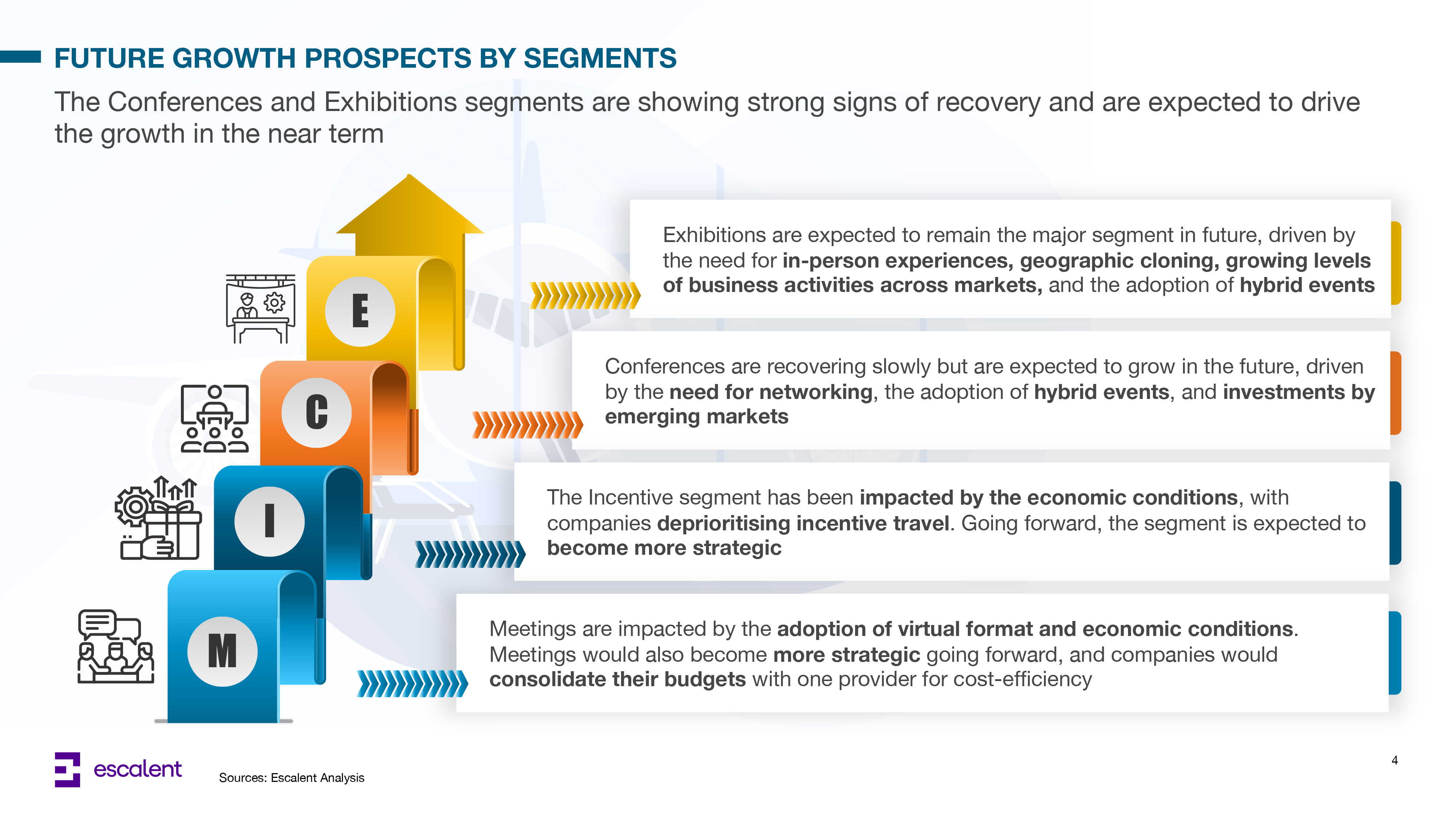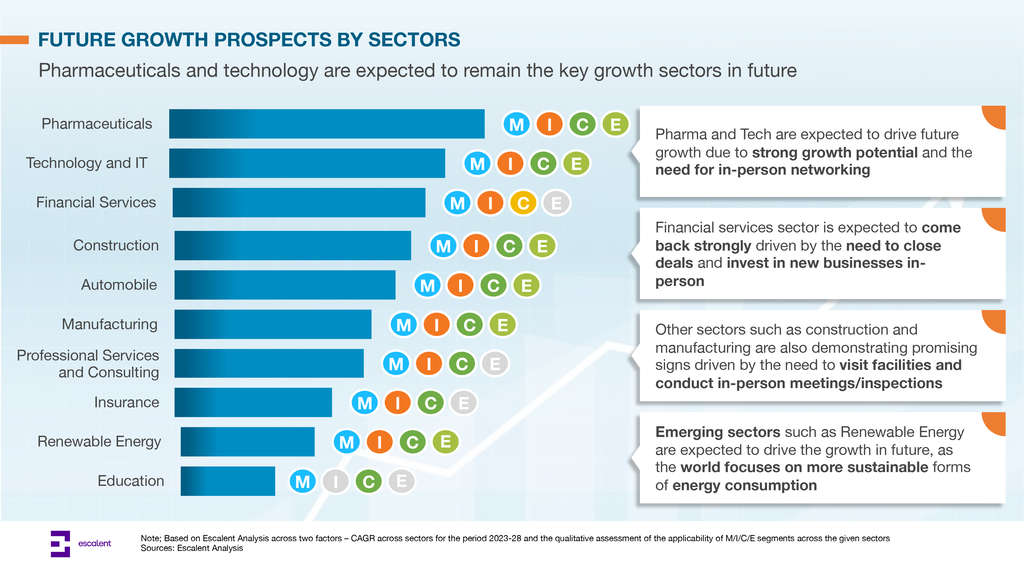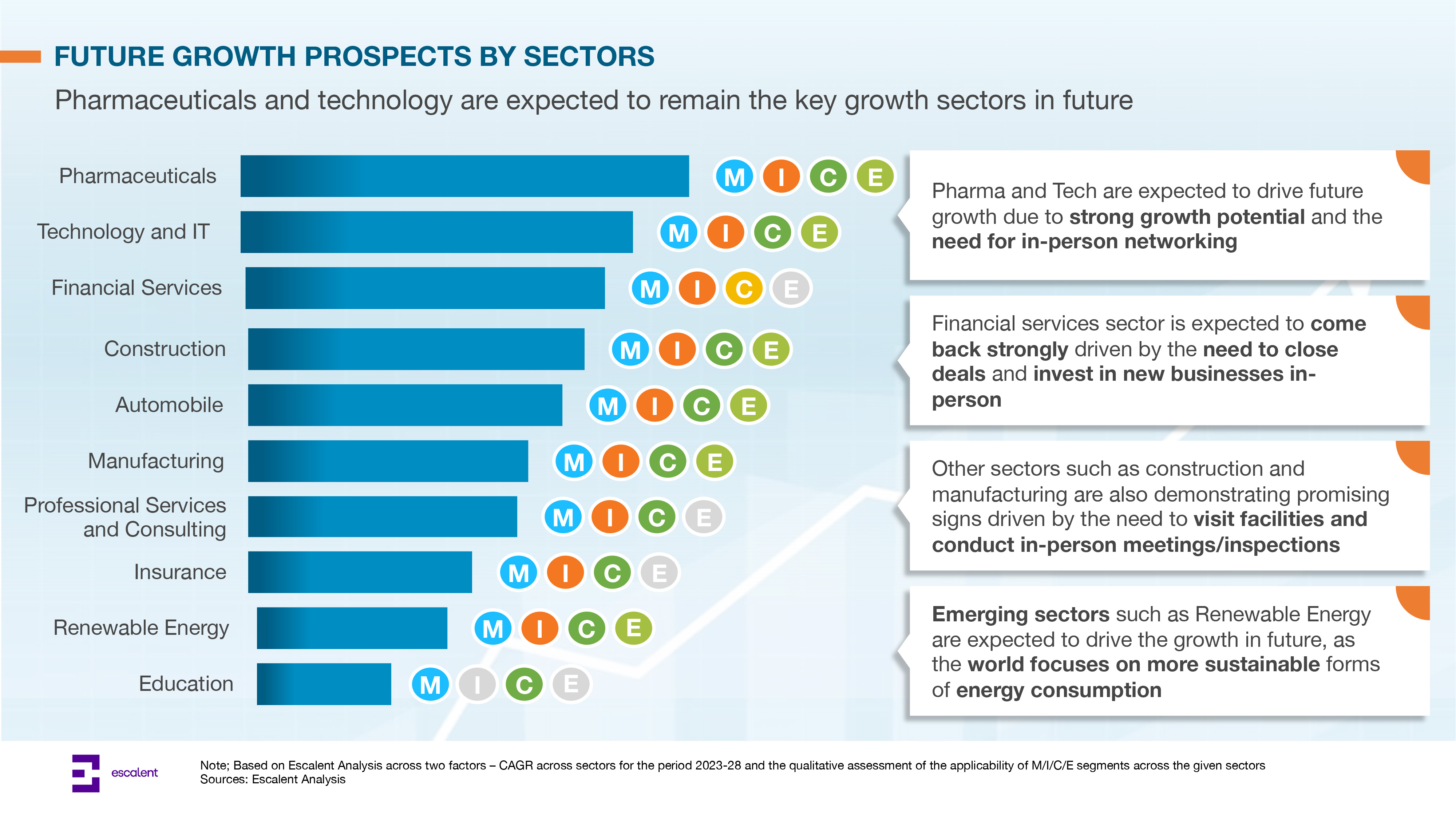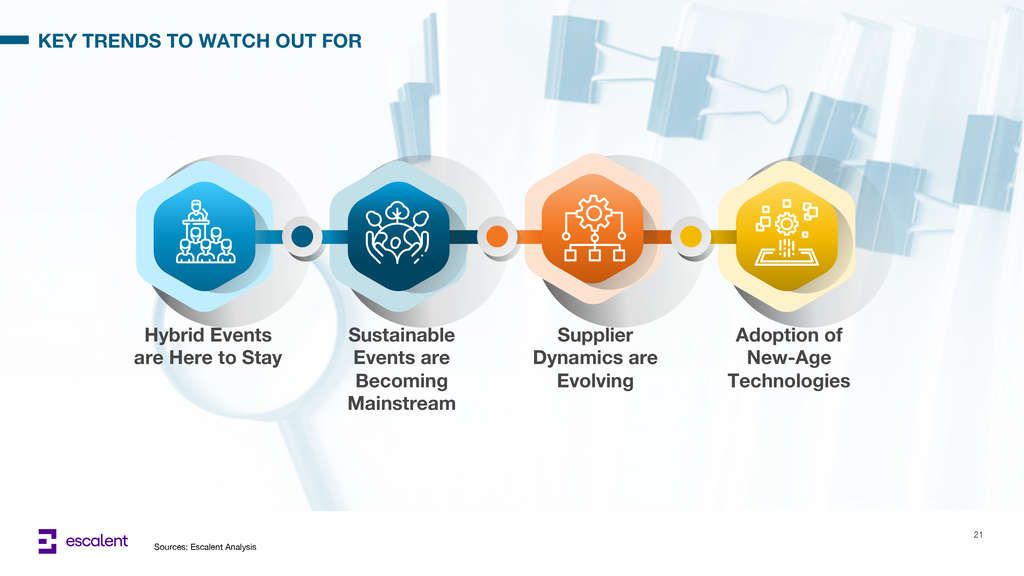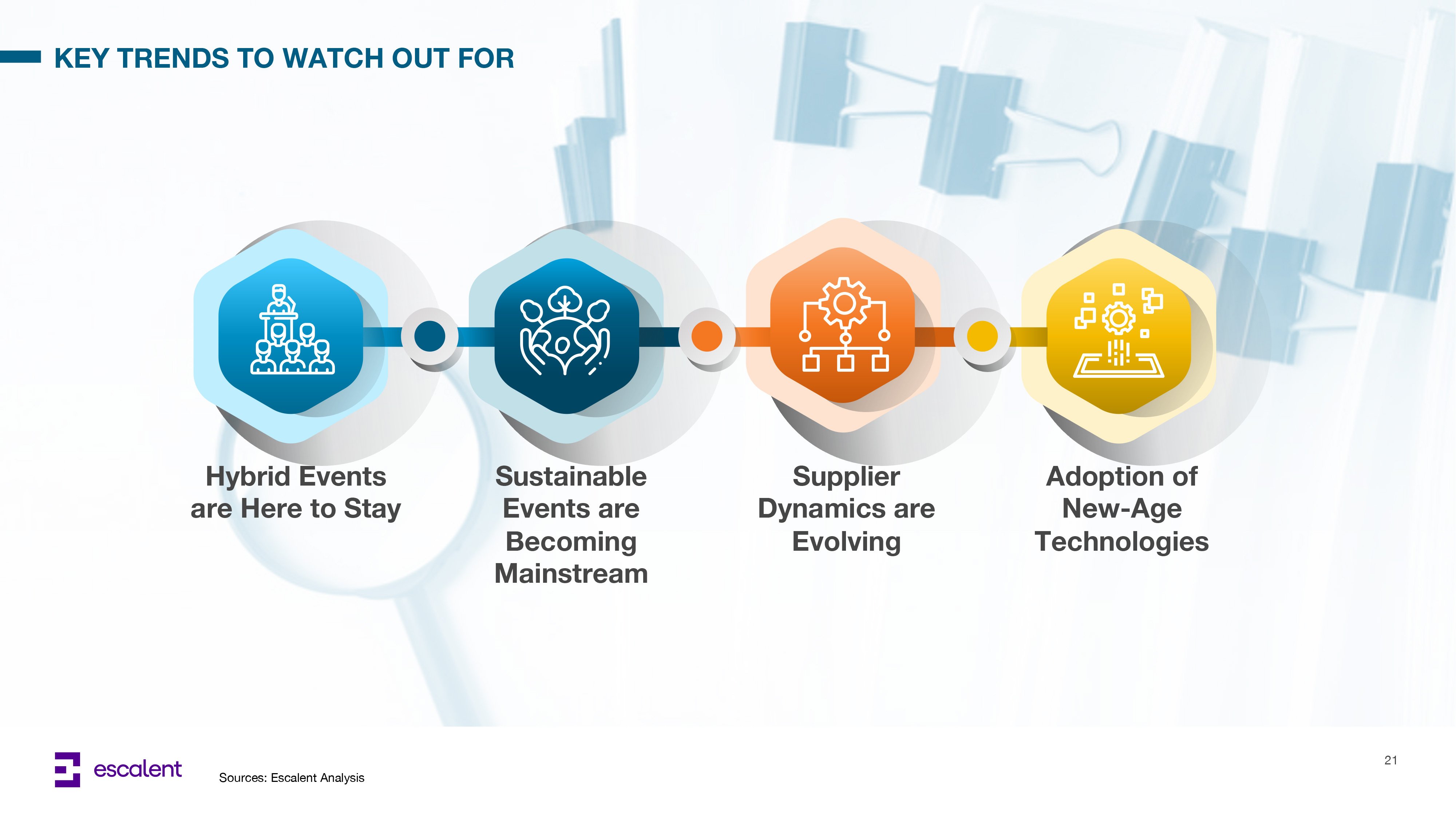[ad_1]
Business travel is back. Data from the Global Business Travel Association (GBTA) projects that international business travel spending will reach $1.5 trillion in 2024, surpassing peaks of $1.4 trillion in 2019. By 2027, GBTA predicts that spending will have reached almost $1.8 trillion, a 25% increase from pre-pandemic levels.
Business travel spending decreased dramatically in 2020, falling 53.8% from the previous year. Now, companies are eager to make up for lost time. However, even as business travel takes flight, there are headwinds to consider. Demand for corporate travel is high, but so are prices for airfares and hotels. With inflation pushing costs up, many businesses are still cautious about the number of trips they are booking and focusing resources on revenue-generating travel.
After years of upheaval, business travel has undergone profound changes — and its recovery will reflect that. From high-growth regions to emerging trends, here’s what hotels can anticipate over the next 18 months.
A comeback for conferences and exhibitions
Among meetings, incentives, conferences and exhibitions (MICE), conferences and exhibitions are driving the corporate travel comeback. This is good news for hotels, who stand to benefit the most from these two segments.
Networking opportunities and in-person experiences, such as product launches and live demonstrations, are fueling demand for these events. Both formats rely on some degree of in-person interaction. In addition, both can help businesses generate revenue, making the expense easier to justify.
Earlier this year, The Global Association of the Exhibition Industry (UFI) reported that 79% of companies noted “normal” exhibition activity for the first half of 2023, an increase from 72% in December 2022. These figures rose even further as the year progressed, with 90% reporting “normal activity” for most months in the second half of 2023.
Businesses are thus far demonstrating a more restrained approach to travel within the meetings and incentives segments. The shift to virtual working — and increased pressure on corporate budgets — have changed how companies approach travel. Many businesses have opted to continue utilizing the virtual meeting format, while incentive travel has been deprioritized as a cost-cutting measure.
In a study by Morning Consult, 32% of participants said their companies had changed their business travel policies. 60% reported that their employer had scaled back on the frequency of travel, and 56% said their company was sending fewer employees on trips.
Strong recoveries and developing markets
At a global level, China and the U.S. represent the largest markets for business travel. Together, they account for over 50% of global spending.
However, North America and Western Europe are positioned to realize the most robust regional recoveries. Both benefit from existing world-class infrastructure and services, and in both regions, corporate travel budgets are on the rise. North America is projected to net a 23% compound annual growth increase (CAGR) in business travel spending by 2026, with Western Europe just behind at 17%.
The Asia–Pacific (APAC) region is set for a comeback, too. Spending is projected to exceed 2019 levels by 3% in 2024. Moreover, experts predict that China will reclaim its place as the industry’s number-one market by the end of 2023, although the country’s economic slowdown could impact its rebound. India is also expected to be a key MICE market in the future, with increased investments by government and a strong economic outlook.
Meanwhile, business travel spending in the Middle East and Africa (MEA) reached 86% of pre-pandemic levels in 2022 and is expected to recover to pre-pandemic levels by year end. The region has been tapped as a key emerging MICE hub, driven by initiatives to develop infrastructure to support global business events.
Pharmaceuticals and technology lead the way
The degree to which companies are embracing the return of in-person travel depends on the sector. Finance and pharmaceuticals, for example, have demonstrated substantial growth in 2023 compared with 2022. The financial sector, in particular, relies on in-person interactions to close deals and fuel investment, making it a clear candidate for increased business travel.
While the technology and IT sector has yet to rebound fully, experts are confident it will play a vital role in the business travel economy. Both pharmaceuticals and technology thrive on in-person networking. In addition, both sectors project a strong CAGR over the next five years. As such, the two industries will act as key catalysts for MICE travel in the future.
Other sectors, such as construction and manufacturing, demonstrate promising signs of recovery, buoyed by their reliance on in-person visits, meetings and inspections. Experts are also eyeing emerging sectors, such as renewable energy, as potential revenue drivers in the future.
The new realities of business travel
Several factors are behind the boom in travel spending. Favorable economic conditions are contributing to a steadier financial landscape than experts initially predicted. The global real gross domestic product (GDP) grew by 6.3% in 2021 and 3.5% in 2022. And after a period of volatility, many advanced economies are exhibiting signs of stability.
Chinese travelers are returning to the skies, too. While Chinese business travel spending dropped by 4.6% in 2022, business travel intentions have tripled, and the country’s rebound is expected to bring an infusion of revenue to the sector.
As companies embrace the return to in-person events, the demand for business travel is robust. In a recent survey, 82% of business travelers told GBTA that they believed corporate travel helped them to achieve their business objectives.
This appetite is driving investment in travel as companies seek to increase sales and strengthen ties around the globe. This pattern, coupled with high interest rates and oil prices, is pushing costs up as the sector competes with leisure travelers. Meanwhile, emerging markets like Saudi Arabia, India and Morocco are establishing themselves as MICE hubs, stimulating growth.
That said, the industry still faces significant barriers. Elevated airfares and room rates are influencing the volume of business trips. Many companies in the hospitality space remain understaffed. Seven in 10 travel suppliers indicate that their companies are facing labor shortages or encountering challenges in recruiting staff. Interest rates are climbing, placing new pressure on hotels and airlines. Geopolitical instability is also impacting travel, especially in countries closer to conflict zones.
To tap into the projected growth, hotels must adapt to the new realities of business travel. That means adjusting their models to account for the trends reshaping the sector.
The enduring popularity of hybrid events
Hybrid events may have risen to prominence as a pandemic necessity, but the format remains popular with business leaders. In a recent study, 56% of participants told UFI that they believed there was a push toward hybrid events in the industry. The format’s enduring popularity stems from its ability to simultaneously address two major corporate priorities.
By embracing the hybrid approach, businesses can retain the advantages of events — such as exposure to new ideas, markets and clients — while cutting costs and reducing the environmental burden of travel.
Hotels could benefit from this trend, too. By marketing themselves as hybrid venues, even smaller hotels with limited on-site capacity could host large-scale gatherings, potentially competing with big chains. However, to cash in on the appetite for hybrid events, venues must invest in technology. Virtual events need reliable, high-speed internet to ensure services are not interrupted for guests or attendees.
Attendees will also need dedicated technology support, and organizers will need to hire skilled moderators who can foster engagement in a virtual setting.
A focus on eco-friendly offerings
Sustainability is also becoming a top concern for companies. Travel is a significant contributor to corporate carbon emissions. In the U.S., for instance, transportation accounts for 29% of all greenhouse gas emissions.
To combat this, businesses are seeking ways to negate the environmental impact of travel. In a recent survey, 64% of respondents told Escalent that their company tracks travel emissions. Another 43% said they were working to integrate sustainability into their corporate travel policies. In the future, companies are more likely to incorporate clauses in their request for proposals (RFPs) that focus on corporate sustainability, a practice that 34% have already adopted.
Increasingly, businesses will opt for hotels and airlines that can clearly articulate the eco-friendly aspects of their offerings. As such, hotels can stand apart by advertising elements like energy-efficient systems, eco-certifications and sustainably sourced products.
Evolving supplier dynamics
Hotels have several high-impact opportunities to grasp. They are also in a position to drive a hard bargain with buyers. During the pandemic, many supplier contracts were frozen at pre-negotiated rates. When contract negotiations resumed in 2022, buyers came to the table with lower-than-expected trip volume, giving hotels and airlines more leverage over rates.
While airline prices are now dropping, hotels, especially European providers, are holding firm. Approximately one in five buyers say hotels are less flexible on rates than in the past.
This signals a shift in the balance of power in the buyer and supplier dynamic, which could prompt both parties to adapt their approaches.
A technology takeover
When it comes to the technologies transforming business travel, hybrid capabilities are just the tip of the iceberg. Augmented reality (AR) and virtual reality (VR) tools can help hotels remotely showcase their venues to travel managers. Venues are using artificial intelligence (AI) to address customer questions, manage reservations and provide tailored recommendations. Buyers are utilizing online booking tools (OBTs) and AI to streamline bookings, regulate employee travel and improve reporting.
Meanwhile, as organizers integrate physical and virtual components into their events, platforms like the Metaverse can bring attendees together in an immersive environment.
Now more than ever, business travel is powered by technology, and hotels must stay ahead of the curve. In a competitive sector, venues that make critical investments in technology today will be well-placed to attract and retain business as the industry evolves.
A future-facing approach to business travel
Despite rising costs, the outlook for business travel is strong. 94% of travel managers told Cvent they are optimistic about business travel activity. In addition, 85% said they anticipate their organization’s 2023 trip volume will exceed that of 2019.
To capitalize on this moment, hotels should proactively invest in the practices that will set them up for success in the coming years. The pandemic has changed the nature of business travel for good, giving event organizers new ways to reach customers worldwide. While suppliers enjoy a resurgence of in-person events, they must also prepare to meet the needs of the next generation of business travelers.
As companies become more strategic about deploying their travel dollars, hotels can establish themselves as valuable partners by prioritizing the sustainable, technology-enabled events that will dominate the future of business travel.
[ad_2]
Source link

